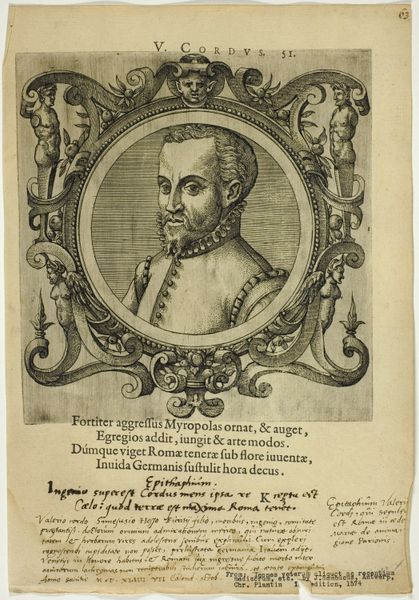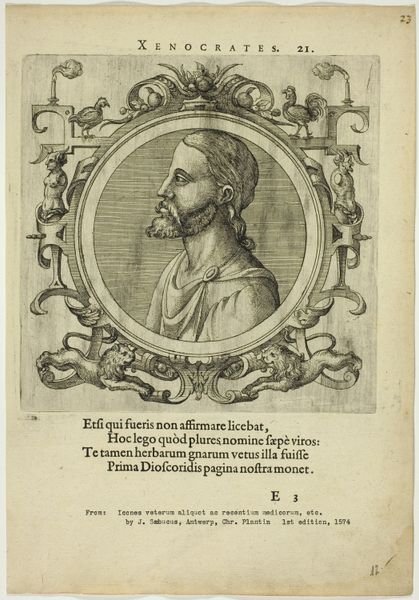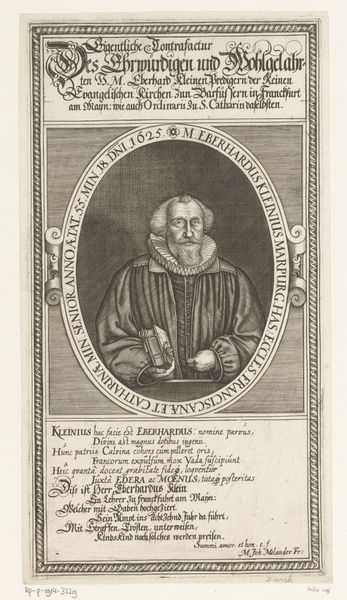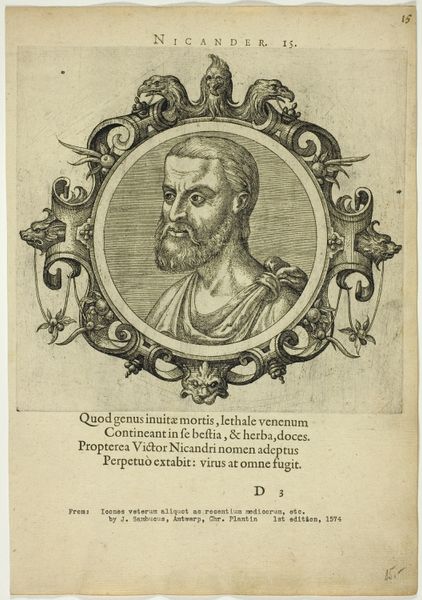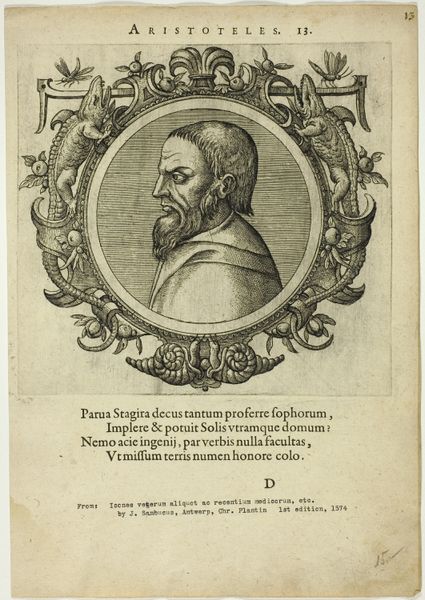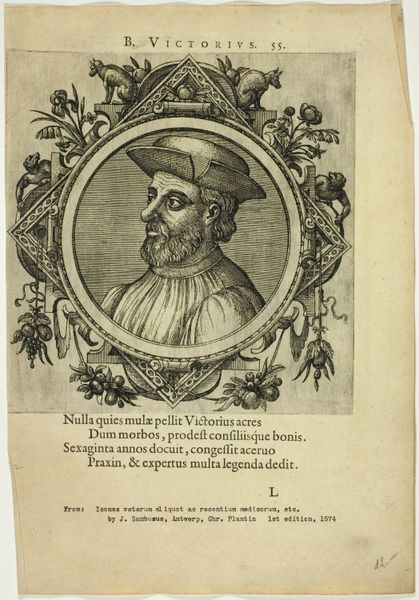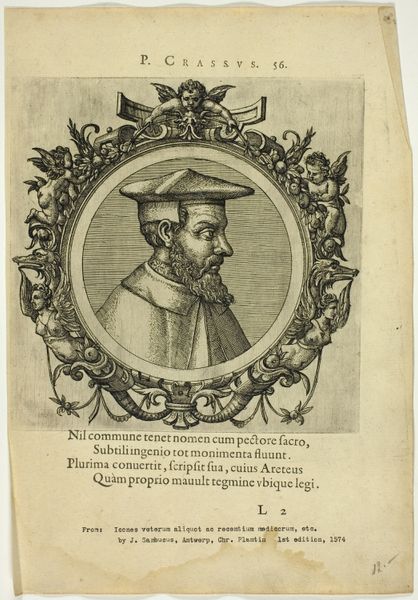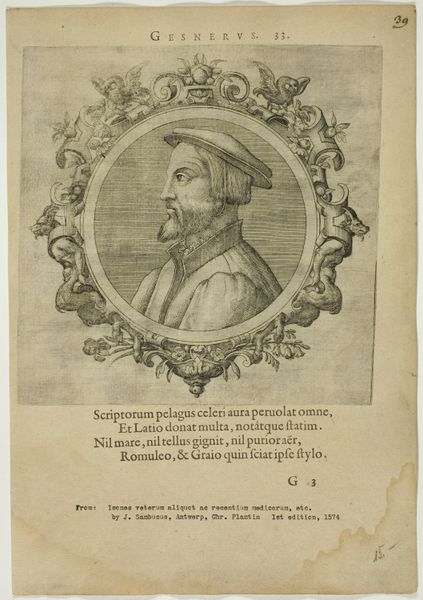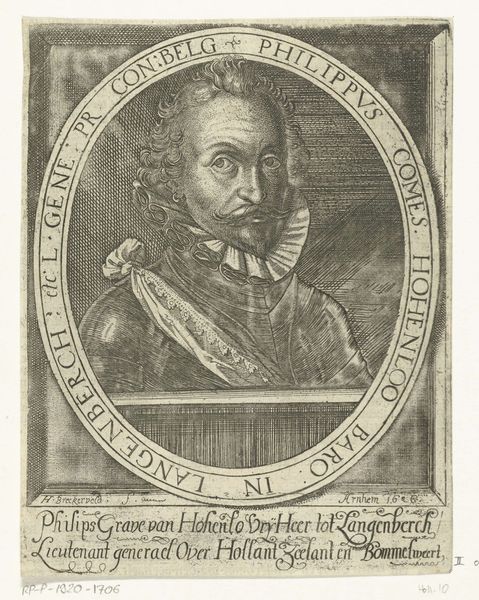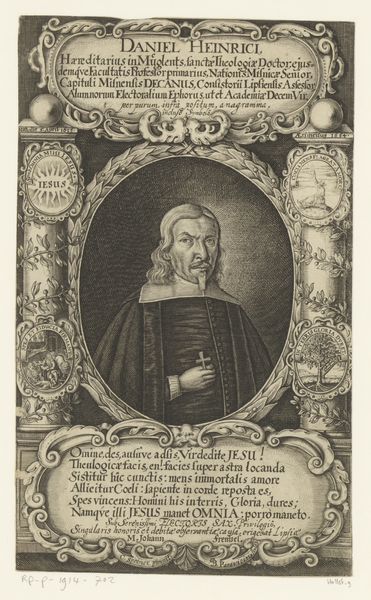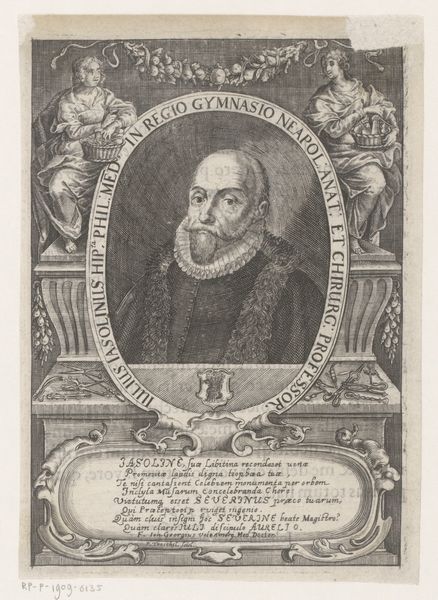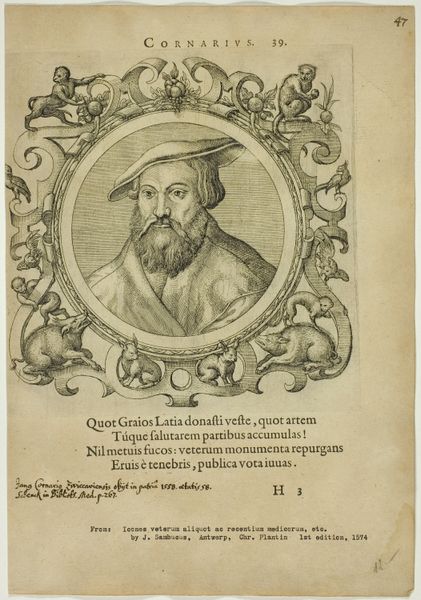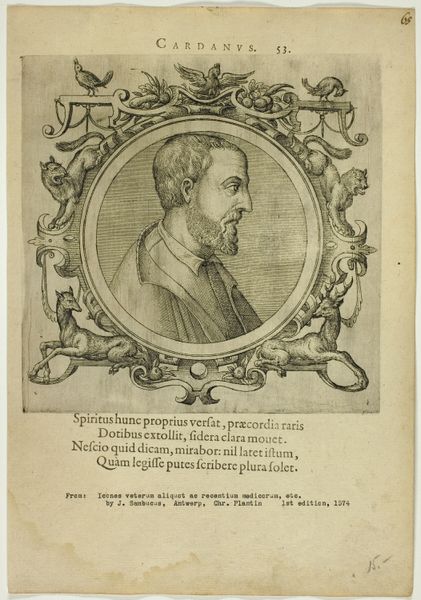
drawing, print, etching, paper
#
portrait
#
drawing
# print
#
etching
#
paper
#
11_renaissance
#
ancient-mediterranean
#
history-painting
Dimensions: 198 × 200 mm (image/plate); 311 × 217 mm (sheet)
Copyright: Public Domain
Curator: This etching, titled *Portrait of Hippocrates*, dates back to possibly 1574. It’s attributed to Johannes Sambucus and resides here at The Art Institute of Chicago. What’s your initial reaction to this piece? Editor: Stark, yet adorned. The severity of Hippocrates’ face is softened by the ornamental frame. There’s something both solemn and celebratory here. What do you make of that contrast? Curator: The ornamental frame is typical of the era; these decorative elements reflect how society held certain historical figures in high esteem, and framing suggests continuity. What truly grips me is the visual language connecting Hippocrates with knowledge and authority – notice the laurel wreath, a symbol of wisdom and victory. Editor: Right, that wreath is critical, but I see more at play than just "wisdom and victory." There's a direct connection to power being forged here. These classical allusions reinforce an elite intellectual lineage, legitimizing certain kinds of knowledge, medicine specifically. It privileges the Western understanding of the body. What does this suggest about whose voices have historically dominated healthcare narratives? Curator: Your observation about historical domination rings true. Hippocrates, though revered, also stood as a symbol for a particular elite class of male intellectuals. However, there's also an undeniably deep wellspring of knowledge connected to the symbols and the continued resonance across cultures. Think of the Hippocratic Oath, still relevant to how medical practitioners engage ethical decision-making today. The symbolism, despite the issues with social and political power dynamics you mentioned, is about something powerful. Editor: That is hard to refute; the staying power and universal respect earned across the millennia cannot be denied. But consider also what the symbol *obscures*. It’s not as though wisdom sprang spontaneously from one person, and there is more to be understood regarding knowledge hierarchies, cultural contexts, and access to quality medicine in the here and now. The symbolism is loaded, right? Curator: I concede that these symbols operate as cultural shorthand; they are efficient communicators of ideas. Ultimately, reflecting on symbols and all they represent demands continuous conversation and re-evaluation. Editor: Yes, the artwork sparks more questions than it settles! I wonder how future generations might decode and challenge the complex cultural encoding in this very deliberate image of a man named Hippocrates?
Comments
No comments
Be the first to comment and join the conversation on the ultimate creative platform.

